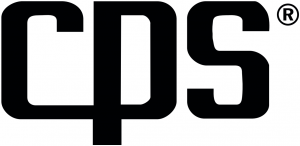
Pro-Set® TRA21 SERIES
Mobile Multiple Refrigerant Recovery / Recycle System

Certified by ITS to meet SAE J2810 for R-134aDesigned to meet new SAE J2851 for R-1234yf
OPERATION MANUAL
GENERAL INFORMATION
Introduction
Congratulations on your purchase of the all new Pro-Set ® TRA21 Series Mobile A/C refrigerant recovery unit. The TRA21 can be setup for either R-134a or R-1234yf operation. The TRA21 utilizes CPS’s patent pending 2 cylinder oil-less compressor. The unit is equipped with a suction side oil separator to collect oil removed from the mobile A/C system. The unit also is equipped with a suction side filter drier with moisture sightglass.
Features:
- Convertible for Mobile A/C R-134a and R-1234yf systems
- Convertible for Commercial recovery
- Small High Side volume eliminates pump down system
- Fast and easy convertible instructions
- All components mounted on a heavy duty roll cage
- Easy to carry handle integrated into the roll cage
- Models TRA21, TRA21C and TRA21S include tank overfill sensor cord
- High Pressure cutout switch
This manual contains important information on the proper procedures for operating this equipment. Please pay close attention to the: Safety Information, Warnings, and Cautions provided throughout this manual.
ALWAYS REMEMBER ” SAFETY FIRST ”
2
General Safety Instructions
ONLY QUALIFIED SERVICE PERSONNEL SHOULD OPERATE THIS UNIT. SOME COUNTRIES MAY REQUIRE THE USER TO BE LICENSED. PLEASE CHECK WITH YOUR LOCALGOVERNMENT AGENCY.
DANGER – The recovery tank used with this unit contains liquid refrigerant. Overfilling of the recovery tank may cause a violent explosion resulting in severe injury or even death. As a minimum, use a scale to continuously monitor the recovery tank weight.
DANGER – Avoid breathing refrigerant vapors and lubricant vapor or mist. Breathing high concentration levels may cause heart arrhythmia, loss of consciousness, or even cause suffocation.
DANGER – ELECTRICAL SHOCK HAZARD – Always disconnect power source when servicing this equipment.
DANGER – EXPLOSION RISK – Do not recover flamable refrigerants.
CAUTION – All hoses may contain liquid refrigerant under pressure. Contact with refrigerant may cause frostbite or other related injuries.
Wear proper personal protective equipment such as safety goggles and gloves. When disconnecting any hose, please use extreme caution.
CAUTION – Avoid breathing refrigerant vapors and/lubricant mist. Exposure may irritate eyes, nose, throat and skin. Please read the manufacturers Material Safety Data Sheet for further safety information on refrigerants and lubricants.
CAUTION – To reduce the risk of fire, avoid the use of extension cords thinner than NO. 14 awg. (2,5mm²) to prevent the overheating of this cord please keep length to a minimum.
CAUTION – Do not use this equipment in the vicinity of spilled or open containers of gasoline or other flammable substances. Make certain that all safety devices are functioning property before operating the equipment.
CAUTION: R-1234yf is a Class A2 flammable refrigerant. Do not recover other flammable besides R-1234yf. Minimize leakage when recovering these refrigerants.USE IN A WELL VENTILATED AREA.

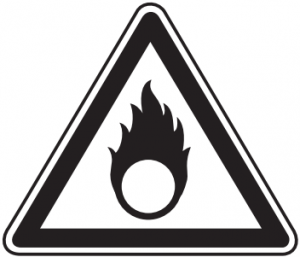
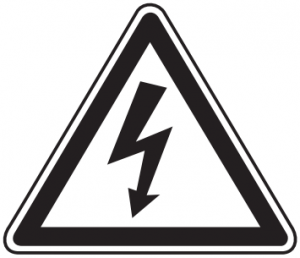
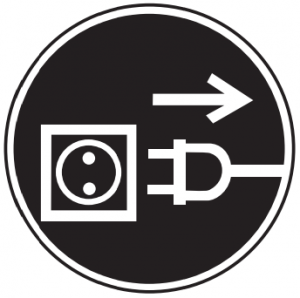


This equipment has been certified by Intertek to meet SAE J2810 for R-134aThis equipment has been designed to meet SAE J2851 for R-1234yf
3
GENERAL INFORMATION
| Model Number | TRA21 | TRA21C | TRA21S | TRA21E |
| Refrigerants | Automotive: R-134a, R-1234yf Commercial: ARI740 Groups III, IV and V | |||
| Temperature Operating Range | 32 ˚F – 120 ˚F (0 ˚C – 49 ˚C) | |||
| Power Source | 115VAC 60Hz 1Ph | 220-240VAC 50Hz 1Ph | ||
| Maximum Power Consumption | 1000 W | |||
| Inlet Filter Drier with Moisture Indicator | 16 Cubic Inch Drier | |||
| Motor Protection | Thermal Overload | |||
| High Pressure Shut-Off (PSI) | 550 | 450 | 550 | 525 Manual (36.2 bar) |
| Exterior Protection | Painted steel tubular roll cage frame. | |||
| Contents Included | TRA21 | TRA21C | TRA21S | TRA21E |
| R-134a Manifold Hose Set | Included | Included | Included | |
| 30 lb DOT Recovery with Overfill Sensor | Included | Included | Included | |
| Overfill Sensor Cord | Included | Included | Included | |
| Suction Hose | Included | |||
| Discharge Hose | Included | Included | Included | Included |
| Oil Drain Bottle and Hose | Included | Included | Included | Included |
| R-1234yf Low Side Coupler | Included | |||
| R-134a Low Side Coupler | Included | |||
| 1/2″ ACME x 1/4″ SAE Female Adaptor | Included | Included | Included | |
| Dimensions | 17.5″ (444mm) Long x 11.25″ (285mm) High x 7.75″ (196mm) Wide | |||
| Weight | 32.2 lb / 14.6 kg | |||
| TRA21O, TRA21CO and TRA21SO are base units which only include an Oil Drain Bottle and Hose. |
4
TRA21 Unit Layout

1 – Inlet port2 – Oil drain valve and port3 – Base unit4 – High pressure indicator light5 – Overfill sensor cord and indicator light (not included on the TRA21E)6 – Roll cage handle7 – Discharge Port8 – Oil seperator9 – Drier with moisture indicator
5
Direct Vapor or Liquid Recovery
IMPORTANT: Before starting the recover of the refrigerant, a refrigerant identifier should be used to determine the type and purity of the refrigerant. Failure to properly identify the refrigerant could potentially expose the user to danger from flammable refrigerants and health hazards from toxic refrigerants. Cross contamination of refrigerants can also occur and would require special handling of the refrigerant.
- Connect the TRA21 to mobile A/C using a manifold set. Use R-134a type manifold (MAIA6Q) for R-134a system recovery. Use R-1234yf type manifold (MTHFO) for R-1234yf system recovery. Use commercial type manifold (MBHP6) for commercial refrigerant recovery.
- Connect the TRA21 discharge to vapor port of the DOT recovery tank.
- Connect the Yellow Overfill Sensor Cord to the float in the recovery tank. This cord is not inclueded on the model TRA21E. For the TRA21E, use scale to monitor tank weight. All connections should be done as shown in Diagram – 1.
- Open the vapor valve on the recovery tank.
- Start unit by pushing main power switch to the “ON” position.
- Open the HI and LO side manifold valves to start the refrigerant flow.
- Monitor the LO side manifold gauge. Once the gauge reaches 20 HG vacuum, turn the unit off.
- Close the vapor valve on the recovery tank.
- Disconnect the hose from the TRA21 discharge, then a small amount of refrigerant under pressure will be released.
- Drain and measure oil from the oil separator. Only new lubricant, as identified by the system manufacturer, should be replaced in the mobile A/C system. Removed lubricant from the system and/or the equipment shall be disposed of in accordance with the applicable federal, state and local procedures and regulations.
6

7
Liquid Flush
- Connect the TRA21 to mobile A/C system LO side service port using the LO side of a manifold. Do not connect the HI side of the manifold to the mobile A/C system. Keep HI manifold valve closed throughout this process.
- Connect the TRA21 discharge to the Vapor Port of the recovery tank. Recovery tank should have at least 4 times the mobile system refrigerant charge.
- Connect the Liquid Port of the recovery tank to the HI side service port of the mobile A/C system. The user will need to provide this hose / coupler assembly.
- Connect the Yellow Overfill Sensor Cord to the float in the recovery tank. This cord is not included on the model TRA21E. For the TRA21E, use scale to monitor tank weight. All connections should be done as shown in Diagram – 2.
- Open the vapor valve on the recovery tank.
- Start unit by pushing main power switch to the “ON” position.
- Open the HI and LO side manifold valves to start the refrigerant flow.
- Run for 15 minutes to allow liquid refrigerant to flood the mobile A/C system. The liquid refrigerant will absorb the oil in the A/C system.
- After 15 minutes, close the liquid valve on the recovery tank.
- Monitor the LO side manifold gauge. Once the gauge reaches 20 HG vacuum, turn the unit off.
- Close vapor valve on the recovery tank.
- Disconnect the hose from the TRA21 discharge, then a small amount of refrigerant under pressure will be released.
8
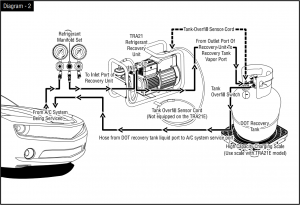
9
Routine Filter Maintenance
Interconnecting Hoses, Service Hoses, Manifold and Service Coupler Maintenance: The TRA21 uses brass to brass seal type fittings on the ends of the interconnection hose assemblies. No hose gasket maintenance is required on the brass to brass type connections. Periodically inspect the refrigerant hose assemblies, service hoses, manifold and service coupler inner o-rings for excessive wear. Replace the compenent(s) if required. Periodically leak check all hose connection points, hose ball valves, manifolds and service couplers. Since this unit does pull a vacuum in the recovery process, excessive Non-Condensable Gases (NCG’s) could be sucked into the system and placed in the storage tank.
Liquid filter drier manitenance: The TRA21 is equipped with a 16 cubic inch filter drier with an integrated moisture indicator. This filter should be checked and replaced periodically. This filter drier removes any moisture that may be contained in the recovered refrigerant.
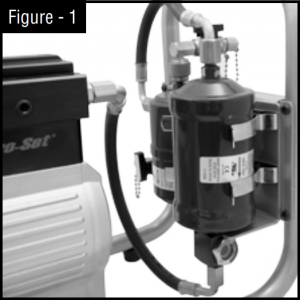 Replace the filter drier as follows: Caution: Always assume the presence of high refrigerant when removing the filter drier.
Replace the filter drier as follows: Caution: Always assume the presence of high refrigerant when removing the filter drier.
- Remove filter drier by loosening the brass flare nuts on each of the fliter drier. Pull filter drier out of the spring clip holders.
- Install new filter drier (ARXF2). Make sure arrow points to the right as in Figure – 1.
- Tighten brass flare nut into each end of the new filter drier.
- Check for leaks.
FILTER DRIER REPLACEMENT IS NOW COMPLETE
10
Trouble Shooting Chart
Problem: The unit will only pull down to 0 pressure or a slight vacuum.Solution: Check all LO side connections for possible leaks. If problem persists, check vacuum level directly on the compressor inlet port.Solution: Check pressure differential at 400 PSIG discharge pressure. At 400 PSIG, the unit should pull a minimum of a 5″ hg. vacuum. If compressor looses its capability of meeting this differential, the compressor seals may need to be replaced.
Problem: HP Red LED lights up, unit starts for a few minutes then shuts off.Solution: The high pressure switch has activated. Make sure the discharge valve and recovery tank valve(s) are open. Check for any other restrictions on the discharge port of the unit. Correct restriction. Restart the unit.
Problem: TOS Red LED lights up and the unit shuts off or will not start.Solution:
- Check to make sure TOS cord is properly plugged into the recovery tank float.
- Check tank weight to verify that the tank is full. Empty or replaced tank.
Problem: The unit recovers at a very slow pace.Solution: Check for restrictions on the suction side connections. Make sure manifold valves are open. Overtighted hose connections can collapse the rubber gaskets causing a restriction.
Learn more about automotive A/C tools and equipment we have.
[xyz-ips snippet=”download-snippet”]

